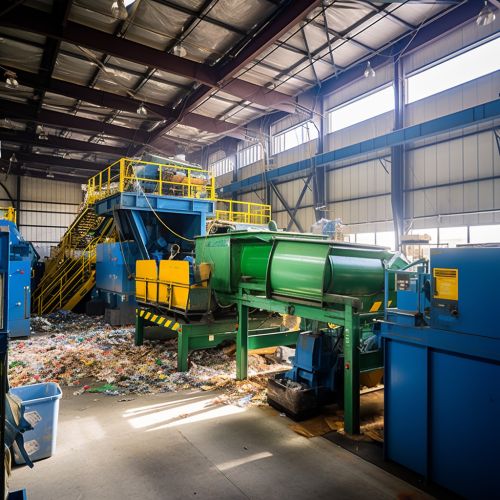Recycling
Introduction
Recycling is the process of converting waste materials into new materials and objects. It is an alternative to "conventional" waste disposal that can save material and help lower greenhouse gas emissions. Recycling can prevent the waste of potentially useful materials and reduce the consumption of fresh raw materials, thereby reducing: energy usage, air pollution (from incineration), and water pollution (from landfilling).
History
The practice of recycling has been a common practice for most of human history, with recorded advocates as far back as Plato in the fourth century BC. During periods when resources were scarce, archaeological studies of ancient waste dumps show less household waste (such as ash, broken tools, and pottery)—implying more waste was being recycled in the absence of new material.
In pre-industrial times, there is evidence of scrap bronze and other metals being collected in Europe and melted down for perpetual reuse. Paper recycling was first recorded in 1031 when Japanese shops sold repulped paper. In Britain dust and ash from wood and coal fires was collected by "dustmen" and downcycled as a base material used in brick making. The main driver for these types of recycling was the economic advantage of obtaining recycled feedstock instead of acquiring virgin material, as well as a lack of public waste removal in ever more densely populated areas.


Process
Recycling processes with recycling codes vary among jurisdictions, as does the best end use for any particular product. In some areas, certain items like aluminum cans or car batteries can be returned for a deposit. In some cases, this can amount to a small income for the recycler. In other areas, no such deposits are paid.
There are many actions along the recycling supply chain that can influence and affect the material quality of recyclate. These can include: sorting, cleaning, remanufacture and testing. The quality of recyclate not only supports high-quality recycling, but it can also deliver significant environmental benefits by reducing, reusing and keeping products out of landfills.
Benefits
Recycling is a key component of modern waste reduction and is the third component of the "Reduce, Reuse, and Recycle" waste hierarchy. Thus, recycling aims to both conserve natural resources and to reduce energy usage.
Recycling can also reduce the amount of waste that ends up in landfill sites, and it can reduce the amount of raw materials that are needed to produce new products. This can help to reduce the amount of deforestation and habitat destruction that is needed to obtain new raw materials.
Challenges
While recycling does have many benefits, it is not a perfect solution to the problem of waste. There are many challenges associated with recycling, and there are many factors that can make it more difficult to recycle certain materials.
One of the main challenges is the lack of a market for recyclables. This is often the result of a lack of demand for products made from recycled materials. Without a market for these products, it can be difficult to justify the cost of collecting, sorting, and processing recyclable materials.
Another challenge is the complexity of the recycling process. Different materials require different methods of recycling, and not all materials can be recycled together. This can make the process of recycling more complex and costly.
Future of Recycling
The future of recycling looks promising with the advancement of technology and increased awareness about the importance of sustainable practices. Innovations in recycling technology have made it possible to recycle more types of materials and to do so more efficiently.
In addition, there is a growing recognition of the need to move towards a circular economy, where waste is minimized and resources are used as efficiently as possible. This shift in thinking could lead to significant improvements in recycling practices and outcomes.
